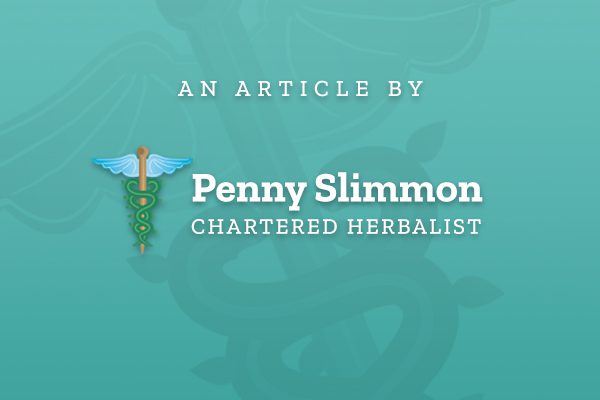The Respiratory System is made up of the lungs, trachea, throat, mouth and sinuses. Its primary function is to supply oxygen to the blood. It also functions to trap and expel airborne toxins. You can live a few days without water and a few weeks without food, but you can survive only a few minutes without air. An optimally functioning respiratory system is critical for good health. The respiratory system is designed to allow gas exchange throughout the body. The body uses oxygen from the air that is inhaled and releases carbon dioxide in the air that is exhaled.
The respiratory system is susceptible to a number of debilitating conditions and infectious illnesses. Every day on average, 78 Canadians will be diagnosed with lung cancer and 58 will die each day from it according to the Canadian Cancer Society. 26% of deaths in Canada were caused by lung cancer. Cigarette smoking is a major cause of lung, disorders, but even non-smokers aren’t immune to respiratory illnesses. The common cold affects virtually everyone: the average adult catches a cold 2-4 times a year, and most children will catch a cold 6-10 times each year. On in four Canadians suffer from allergies and asthma.
Infectious Diseases of the Respiratory Tract
Non-Infectious Diseases of the Respiratory Tract
- The common cold – caused by one of the 200 types of contagious viruses
- Sinusitis – infection or inflammation of the sinuses
- Croup – viral infection affecting mostly children under the age of 6
- Influenza (or flu) – a respiratory infection caused by a number of viruses
- Acute Bronchitis – short lived inflammation of the bronchi caused by a viral or bacterial infection
- Pneumonia – an inflammation of the lung usually caused by infection with viruses, bacteria and fungi
- Asthma – is a chronic, or long-term, lung disease characterized by inflammation and narrowing of the airways. Sit is caused by hyper-reactivity of the airways often in response to allergens in the environment or in food. When sensitive airways encounter an irritant, they react by swelling and narrowing, leading to wheezing, coughing, chest tightness, and breathing trouble.
- Hay fever – or allergic rhinitis (inflammation of the nasal passages) is a type of allergy marked by sneezing, runny or congested nose, coughing, post nasal drip and itching of the eyes, nose, and throat. It can be caused by pollen from trees, weeds, grassed, and flowers, and is most problematic in the spring, summer and fall. It can also be caused by molds, chemicals, dust mites, animal hair and dander. In sensitive individual, exposure to these allergens causes the immune system to overreact by prompting white blood cells to release histamine and other inflammatory and irritating compounds in the body. These agents can cause wheezing, itching, swelling, mucous production and in some cases, hives and skin rashes.
- Chronic Obstructive pulmonary Disease (COPD) – also called emphysema, is a disease in which the alveoli of the lungs lose their elasticity and become floppy, like stretched-out rubber balloons. People with COPD have difficulty breathing and their bodies don’t get enough oxygen. Symptoms include shortness of breath and coughing up mucous. Smoking is the most common cause of COPD but breathing in other kinds of irritants, including pollution, dust, or chemicals may cause or contribute to the disease.
- Chronic Bronchitis – a form of COPD, is an inflammation of the bronchi usually associated with smoking or long-term exposure to toxins or irritants. Symptoms include shortness of breath with slight exertion or at rest, wheezing and a loose, wet cough.
Prevention and Natural Support of Respiratory Infections
When the respiratory tract is invaded by disease-causing bacteria or viruses, the immune system is activated to defend the body in a number of ways. Most of the troublesome respiratory symptoms experienced during a respiratory infection are caused by the immune system, and these symptoms are helpful-and even essential-in overcoming the illness.
As the invading organisms latch onto the cells in the nose, throat, and lungs, the cells release inflammatory compounds that attract white blood cells to the site of infection to attack, destroy, and engulf the disease-causing germs. As the white blood cells complete their mission, they begin to accumulate by the millions. Coughing, sneezing and a runny nose help remove these white blood cells, as well as germs, mucous, and other byproducts of infection from the sinuses, bronchi, and lungs.
If you’ve ever listened to some commercial advertisements for pharmaceutical drugs or over-the-counter cold remedies, you may have been let to believe that the symptoms of a respiratory infection, such as fever, coughing, and a runny nose, are somehow bad for you. In reality, it’s not these symptoms that are bad for you; it’s the infection that causes them. Trying to suppress the symptoms rather than eliminate their underlying cause is usually counterproductive because doing do partially suppresses the body’s natural mechanisms in response to infection and illness.
When you have a respiratory infection, taking a medication to suppress a cough can allow germs, mucous, and toxins to accumulate, in the lungs and increase the risk of developing pneumonia. Likewise, taking a medication to “dry up” nasal secretions can allow these agents to accumulate in the sinuses, increasing the risk of sinusitis.
When you develop a fever, it’s another good sign that your immune system is doing its job. Fever is useful in killing invading organisms, which typically prefer a normal body temperature. You can think of a fever as the body’s way of “pasteurizing” the blood, similar to the process used to kill germs in milk with short bursts of relatively high temperatures.
Taking prescription drugs and over-the-counter medications designed to suppress fever, cough, runny nose and other symptoms of respiratory illnesses does nothing to address the underlying cause of the respiratory infection or to speed the healing process. Rather, these drugs interfere with the normal, protective function of the immune system and can end up worsening or prolonging respiratory illnesses.
Unlike antibiotic drugs, herbs help nourish and soothe the tissues of the respiratory tract. Because they don’t harm the body’s beneficial probiotics, herbal supplements may enhance the protective and healing powers of the immune system rather than weaken them.
Did you know?
- Your lungs contain almost 1,500 miles of airways and over 300 million alveoli
- Each day you take over 20, 000 breaths and breathe about 35 pounds of air. Over the course of your lifetime, you may take as many as 700 million breaths.
- Plants are our partners in breathing. Humans breathe in air, use the oxygen and release carbon dioxide. Plants take in carbon dioxide and release oxygen. It’s a great system!
- A single sneeze can send more than 5,000 droplets into the air at a speed of 47 miles per hour. This is a good reason to cover your nose and mouth when you sneeze and to wash your hands afterwards.
- Antibiotics have become overused for many common respiratory conditions. They are useful for some bacterial infections, but they have no effect on viruses such as a cold or influenza. Frequent or indiscriminate use of antibiotics weakens the immune system by killing of probiotics, the beneficial bacteria in the gut that play a critical role in immunity.



